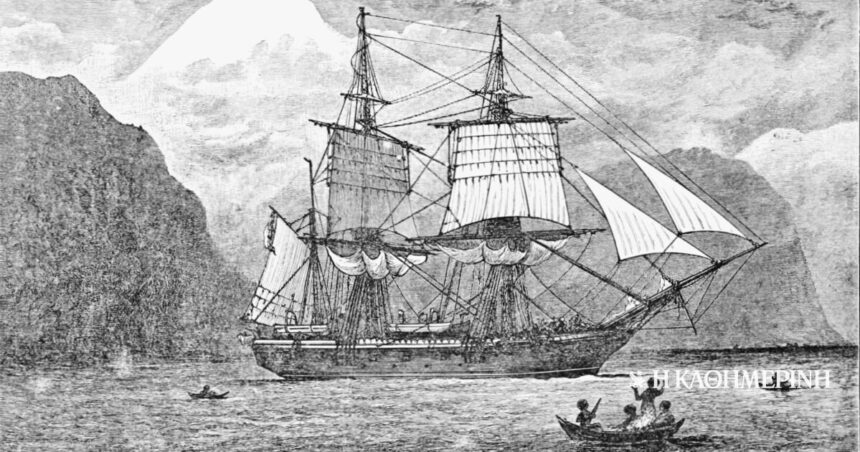THE Charles Darwinwho had shown great interest in her nature while studying Medicine at the University of Edinburgh, he was only 22 years old when he was employed as a naturalist on board the Beagle. The Beagle sailed from Plymouth on 27th December 1831, captained by Robert Fitzroy. The mission was originally planned to last two years. In the end, however, the journey took almost five, as the ship returned on October 2, 1836.
Most of the trip involved tours of South America. During their time, Darwin collected a multitude of plants and a variety of specimens, mostly of birds. In addition, he expressed views that were on the same wavelength as her theory of uniformity by Charles Lyell. The specimens he collected were almost all accompanied by detailed notes, as Darwin wrote incessantly during the voyage, whether on board ship or in a house near the shore.
The notes during the trip highlight his keen observation, his investigative and penetrating eye.
But even when he traveled on land, he also took notes, as well wanted to record in detail everything related to his travels but also everything related to the biology, geology, natural history and anthropology of each place he visited. These notes, therefore, are not just a kind of travel memoir; they are, at the same time, a reference in the field and – above all else – they highlight his acute observation, his investigative and penetrating look. In addition, these notes are accompanied by comments which indicate his changing and not yet finalized views on the evolution of species.
One of the most important findings made by the British naturalist concerned the samples he collected from the Galapagos Islands. More specifically, he noticed that the finches on the island were very similar to those he had encountered on the mainland, however each subspecies displayed certain special characteristics that allowed it to more easily collect its food in the particular habitat it lived. This and other similar findings prompted him to delve deeper into her question species diversity and to develop in 1838 his theory of the mechanism of natural selection.
A few years later, he proceeded to write a book in which he first developed his theories of evolution by natural selection. This work was published in 1859 under the title “On the Origin of Species by Means of Natural Selection».
By the time Darwin died in 1882, his theory had become more widely accepted.
According to his theory, organisms evolve gradually through a process he called “natural selection.” According to this, organisms with genetic variations that allow them to survive – are better adapted to a particular environment, tend to have more offspring than organisms of the same species that do not have the particular genetic variation.
Many scientists quickly embraced his theory, but a number of Christians condemned the work as heresy. The controversy would deepen further with the support of the view of the descent of man from apes. By the time Darwin died in 1882, his theory had become more widely accepted. Subsequent developments in genetics and molecular biology led to its modifications to arrive at the theory of evolution that is accepted today, however his contribution is still recognized as of great importance.
Column editor: Myrto Katsigera, Vassilis Minakakis, Antigone-Despoina Poimenidou, Athanasios Syroplakis




